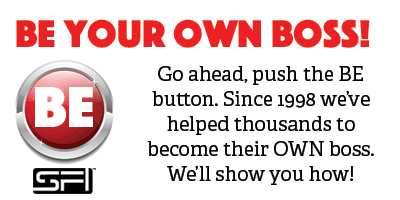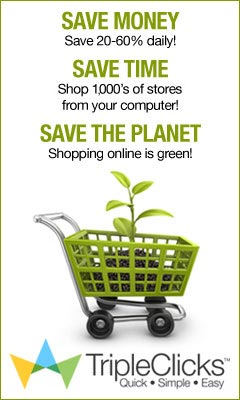
1. Don’t Fail to Research your Competition
As an affiliate, it is required that you promote products/services by way of affiliate links. It is of utmost importance therefore to know what your competition is doing. You must through detailed research know at all times what your competition is up to. Make sure you know your competition well enough and how they are promoting. The aim is to do better than what they are doing that is working for them. If for instance they have more links than you do pointing towards their website/blog posts, then your chances of making money are going to be slim when compared to them. To match up, you will need at least as many affiliate marketing links that they have in order for your content/blog posts to be sufficiently competitive. You really need to stand out from the crowd if you want more people to visit your website/blog post and to buy anything via your affiliate links.
2. Don’t Fail to Know the Product/Service you Promote
It is a truism in marketing that you cannot effective sell any product you don’t know well enough. Not knowing well enough the product you are promoting via your affiliate links is a recipe for failure. This is why you must know what you’re promoting and why people should buy it if you want your affiliate marketing efforts to yield good results. If you don’t know much about the product you are promoting, how then can you expect to effectively market it to others?
3. Don’t Ignore Search Engine Optimization, SEO
SEO is extremely important if you want your website to rank high in the SERPs of search engines. SEO helps online searchers to locate you on the web. If people can’t find your content/blog posts, you can’t expect such people to buy anything via your affiliate links. Many bloggers tend focus more on other aspects of their websites but ignore SEO completely. That is one huge marketing mistake that could cause them to lose out on a lot of money. Without the right SEO on your blog content, it is lost completely in the deep sea of the internet. Affiliate marketers can therefore not afford to ignore SEO of their content.
4. Don’t Rely Only on Affiliate Traffic
For your affiliate marketing efforts to have the right traction and be successful, it is hugely important that you don’t rely on only one source of traffic. The more traffic sources to your website, the better for your affiliate marketing efforts. If you limit yourself to one traffic source, you lose out on traffic/visitors to your website and consequently your earnings. Taking advantage of many web resources/channels particularly social media to promote your content helps to diversify your traffic sources and it is good for traffic.
5. Don’t Pick Quantity over Quality
In affiliate marketing, you should never sell your visitors short. Always give them the best on offer. Promoting quality links is preferable to the quantity of links. Don’t focus on how many affiliate links to have on your content. It is better to focus more on the quality of those links. Too many poor links on your content can earn you a penalty from search engines. Too many poor links makes your content to look like spam and search engines hate spam. Your content cannot rank high in SERPs if search engines see it as spam. If your blog content does not rank high, it is difficult for many people to see it and as such, many people won’t buy products through your affiliate links.

6. Don’t Spam with Affiliate Links
Search engines are usually very sensitive to spam and there is always a very thin line between sending out affiliate links to people and spamming them. Never make the mistake of trying to send out too many affiliate marketing emails at a time thinking that doing so will help you to get more leads/customers. If you do, you risk sanctions from search engines if they classify your content as spam.
7. Don’t Fail to Have a Plan
In affiliate marketing just like any other business, if you fail to plan, you are planning to fail. You must have a workable plan in place if you want your affiliate marketing efforts to be successful. Just like any other human activity, if you don’t know what you’re doing or where you’re going, you go nowhere fast. You cannot expect people who visit your content/blog posts to buy anything via your affiliate link if you don’t have a plan in place to lure them to do so. In affiliate marketing, planning and good strategy matter a lot. It is of paramount important to always have a good plan in place to help you make money via your affiliate links. You must know what you are doing before your content/blog posts can expect to rank highly in search engines. If they don’t, it will be pretty difficult if not impossible for many people to visit your website and do business with you.
8. Don’t Fail to Identify Target Groups
If you market content, your audience is your primary market. To market effectively to your audience, it must be properly identified and segmented. If you don’t, you’ll be making one common mistake many bloggers and content marketers make by not identifying their target groups when they do affiliate marketing. If you don’t know who your target group is, then how are you supposed to sell anything via an affiliate link? If you want people to buy anything via an affiliate link, it is of paramount important that you identify your target market very distinctly. You must know who you’re marketing to and how they are going to respond to your content if you expect them to buy anything. If you don’t, most of your marketing efforts particularly via affiliate links will yield very little or no results at all.
9. Don’t Copy-Paste Other Affiliates
If you have the habit of copying and pasting content from other affiliates, you risk penalties from search engines. For this reason, if you want to be really successful with affiliate marketing, then it’s important that you regularly create your own unique content and post consistently. If you copy-paste other people’s work, you risk being found out easily. That can lead to more sanctions including outright bans from some websites/services altogether. The rule is to regularly create your own unique content if you want people to buy anything via your affiliate links. Doing so helps you to grow your brand authority and influence and your audience grows in tandem.
































